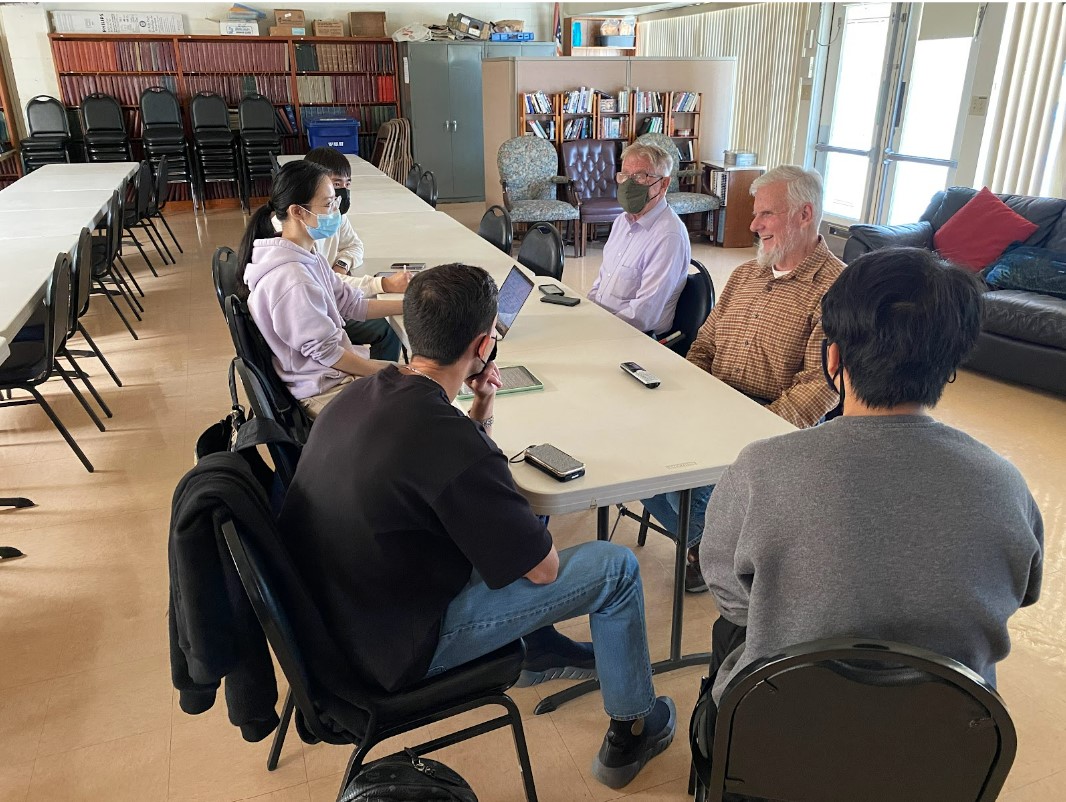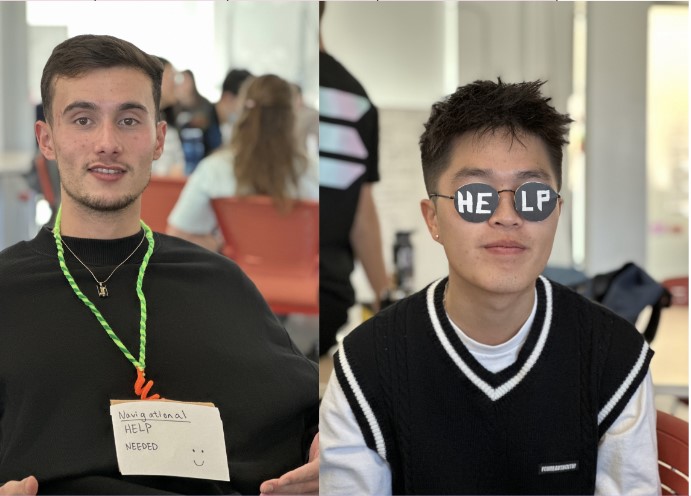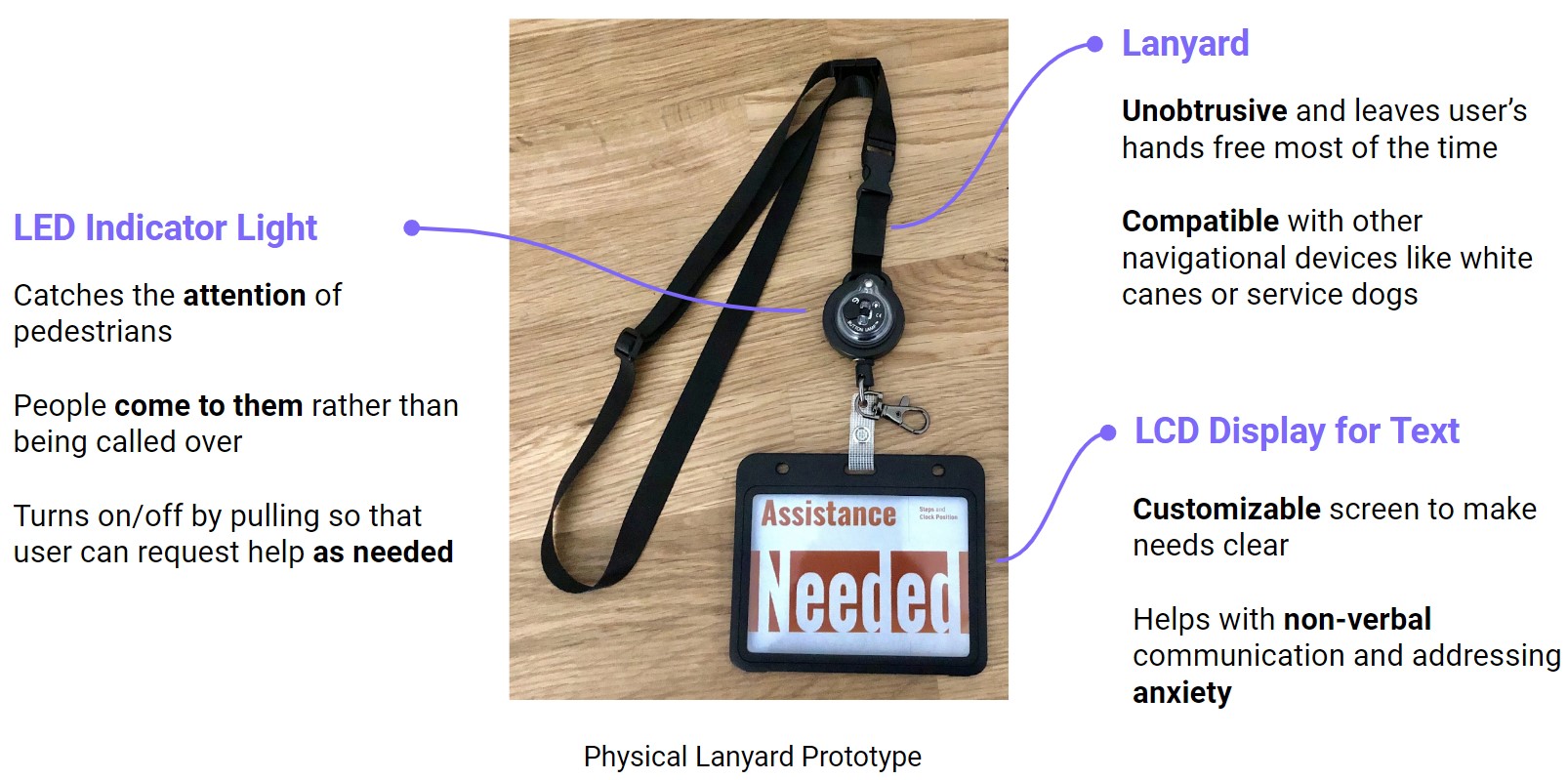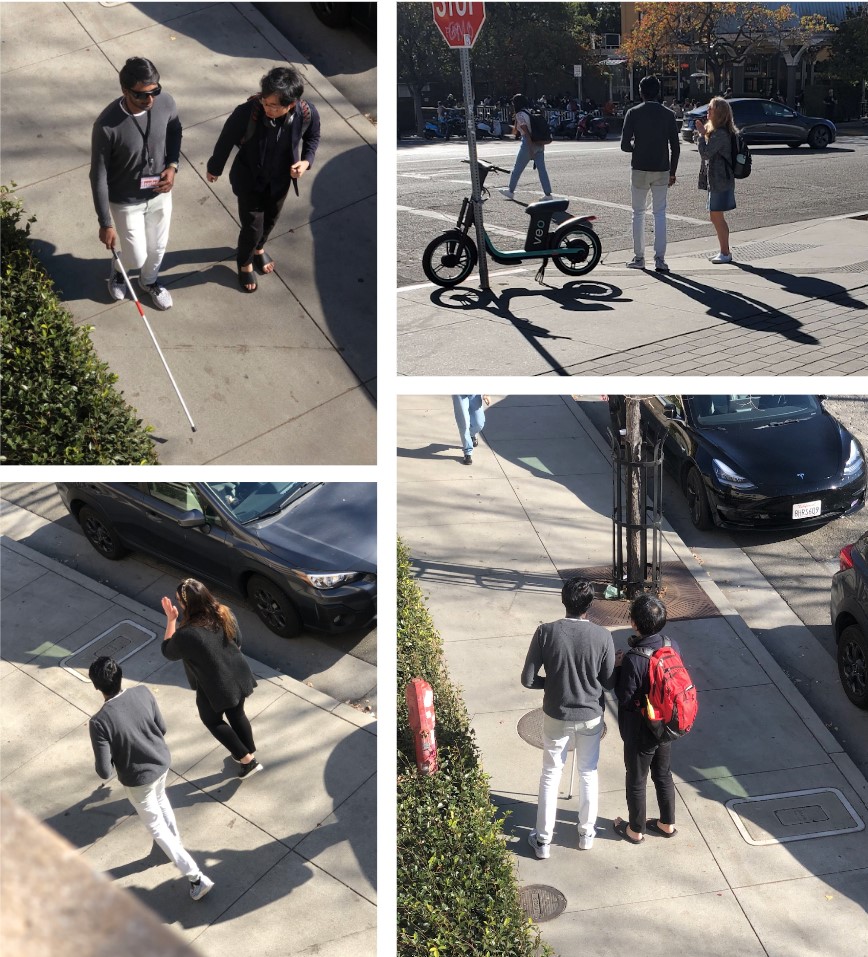AssistMe
The Problem
Our team aimed to develop a product which would help the visually impaired and blind community in their everyday navigation. Initially, we were going to explore ways to redesign the white cane for a better wayfinding experience.
Customer Discovery
We performed a variety of interviews with our target stakeholders to identify what pertinent issues they had. Quickly we realized the white cane, our original idea, was not a problem which needed solving. However, we discovered another problem, the issue of asking for public assistance.
The main issues we found were that visually impaired people could easily get to the general location of a specific area, such as a building, but would not know specifically where entrances were, what number the building was, or other details not included in general maps. This was especially the case when they were looking to find new locations they had not been to.
Generally, visually impaired people found that they were either unable or uncomfortable to reach out to others for help, and conversely sighted people were afraid to assume

Concept Generation
Given the information we gathered, we determined some key factors our product should embody:
- Be comfortable to carry and use
- Easily noticed and readable
- Communicate the assistance required nonverbally
- Be customizable
- Not impede the user or detract from their mobility and dexterity
We set about creating hundreds of concepts with these factors in mind, while also aiming to find ways to communicate the message effectively. After winnowing and some low-fidelity prototypes, we came down to two main concepts.

Our two main concepts were Smart Glasses and Alerting Lanyard which were carried into empathic testing.

The Alerting Lanyard Would be a lanyard with a light-up customizable display, and the glasses would be a pair of classes with LCD in the lenses.
Empathic Testing and Stakeholder Reassessment
With Smart Glasses and Alerting Lanyard, our team members went out to test scenarios where the product may be used. These included wandering outside buildings and asking assistance for specific locations, or asking to cross the street.
We found the Alerting Lanyard was best suited to reaching all the key factors we laid out for the product. Furthermore, after speaking again with one of our stakeholders, they confirmed Alerting Lanyard’s ability to suit their needs and helped point out some extra design features we may include, which included an indicator light for greater visibility.
Final Prototype



